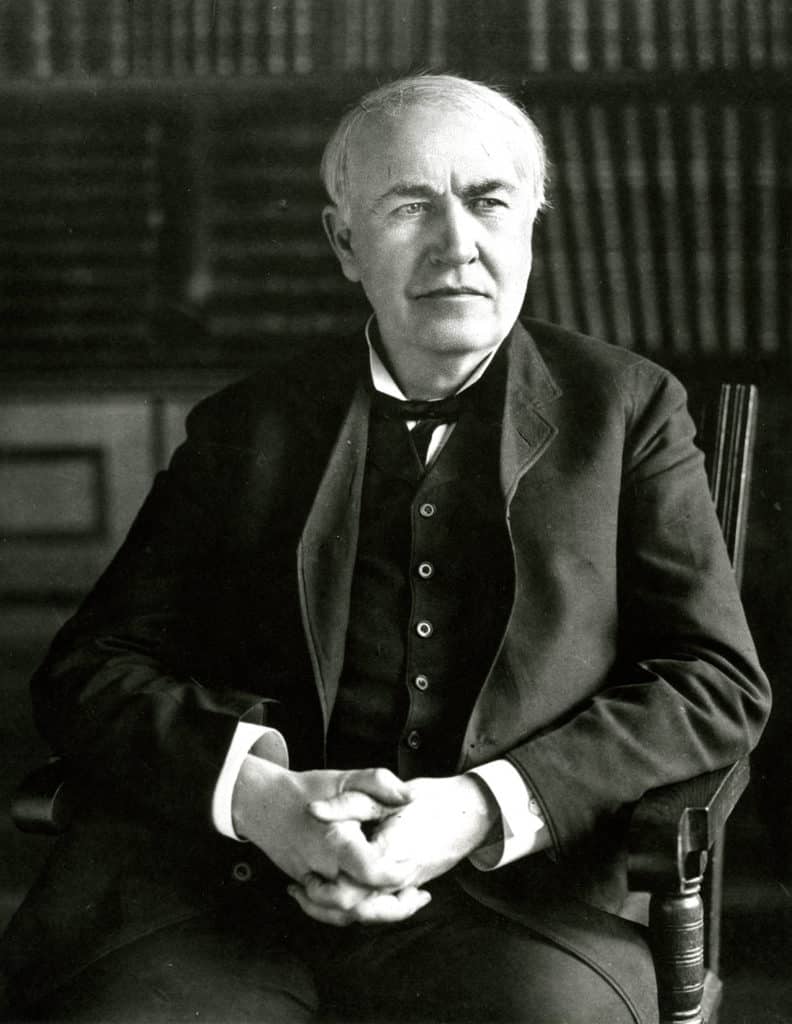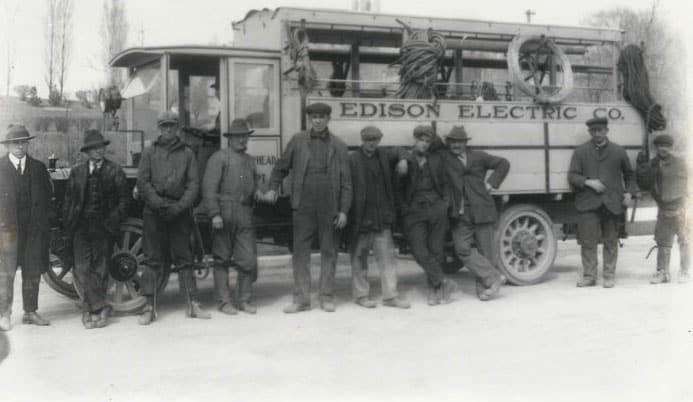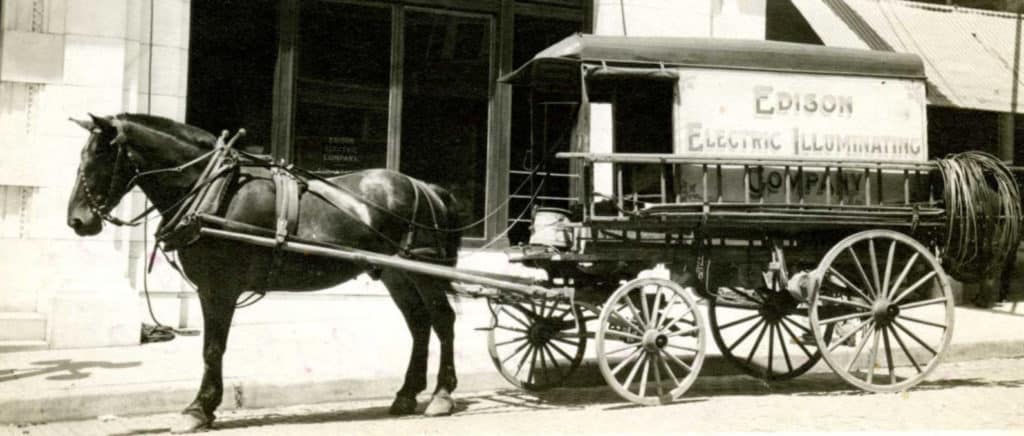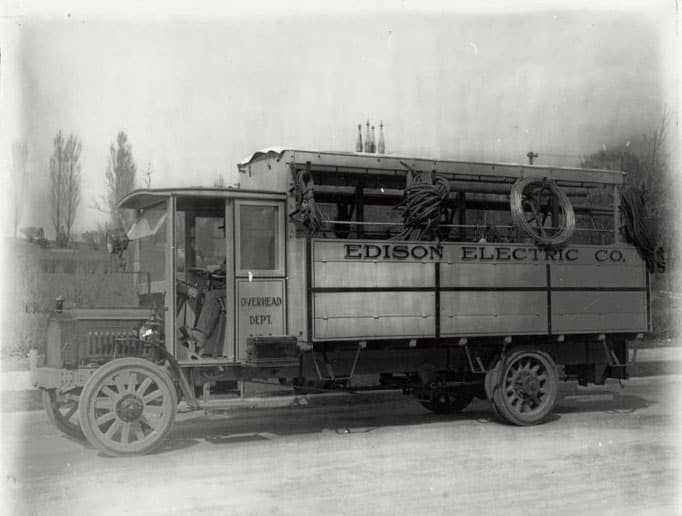Hotel in Sunbury was first ever to be illuminated by Edison’s revolutionary system.
In February, many utility companies across the world celebrate the life of Thomas Edison to mark his birthday on Feb. 11, 1847.
It makes sense given the fact that Edison sparked the creation of the electric utility industry by inventing the light bulb and a revolutionary electricity distribution system.
But PPL’s connection to Edison runs even deeper.
A company Edison founded in 1883 – The Edison Electric Illuminating Co. of Sunbury – was acquired by PPL (then PP&L) in 1930, 10 years after the company was founded.
Edison made history with his company on July 4, 1883 when The City Hotel in Sunbury, Pennsylvania, now the Hotel Edison, became the first building in the world to be commercially wired and illuminated by incandescent electric lights through Edison’s three-wire system.
How did Sunbury – a city still serviced by PPL Electric Utilities today – become the home of such a feat? Here’s the story:
After inventing the first practical incandescent electric light bulb in 1879, Edison searched for a place to build a central system that could generate, transmit and distribute electric power.
He picked a location on Pearl Street in Manhattan. There, Edison successfully illuminated 800 lamps in 1882. But he wanted to light up an entire town and realized it would take hundreds of central stations to light up New York City.

In his search for a small town to illuminate, a business associate from Williamsport recommended Sunbury. The town was near coal fields – a convenient fuel source to power boilers – and gas prices in Sunbury were high, making it an attractive place to introduce an alternative energy source.
In the Spring of 1883, Edison’s construction company built a central station in Sunbury and connected the plant and areas along the streets with overhead wires. Houses and businesses were wired with Edison’s new technology.
Edison and his workers decided to illuminate The City Hotel on July 4, 1883, proving the feasibility of a three-wire incandescent electricity system. Afterward, Edison demonstrated for the first time that an entire community could be powered from a commercial three-wire generating and electricity distribution system

After PP&L acquired the Edison Electric Illuminating Co. of Sunbury in 1930, it grew from an inventor’s dream to PP&L’s Sunbury Steam Electric Station.
A state-of-the-art-facility that surely would have made Thomas Edison proud as PP&L continued a strong tradition of meeting demand for electric power in central and eastern Pennsylvania.
While the plant that once produced enough electricity to power a city three times the size of Scranton is no longer in operation, PPL’s commitment to serving this community with reliable, efficient energy transcends generations.1

1 Bohman, D. (2014, April 15). Casualty of Coal: One of Two Major Coal-Fired Electric Plants to Close.



